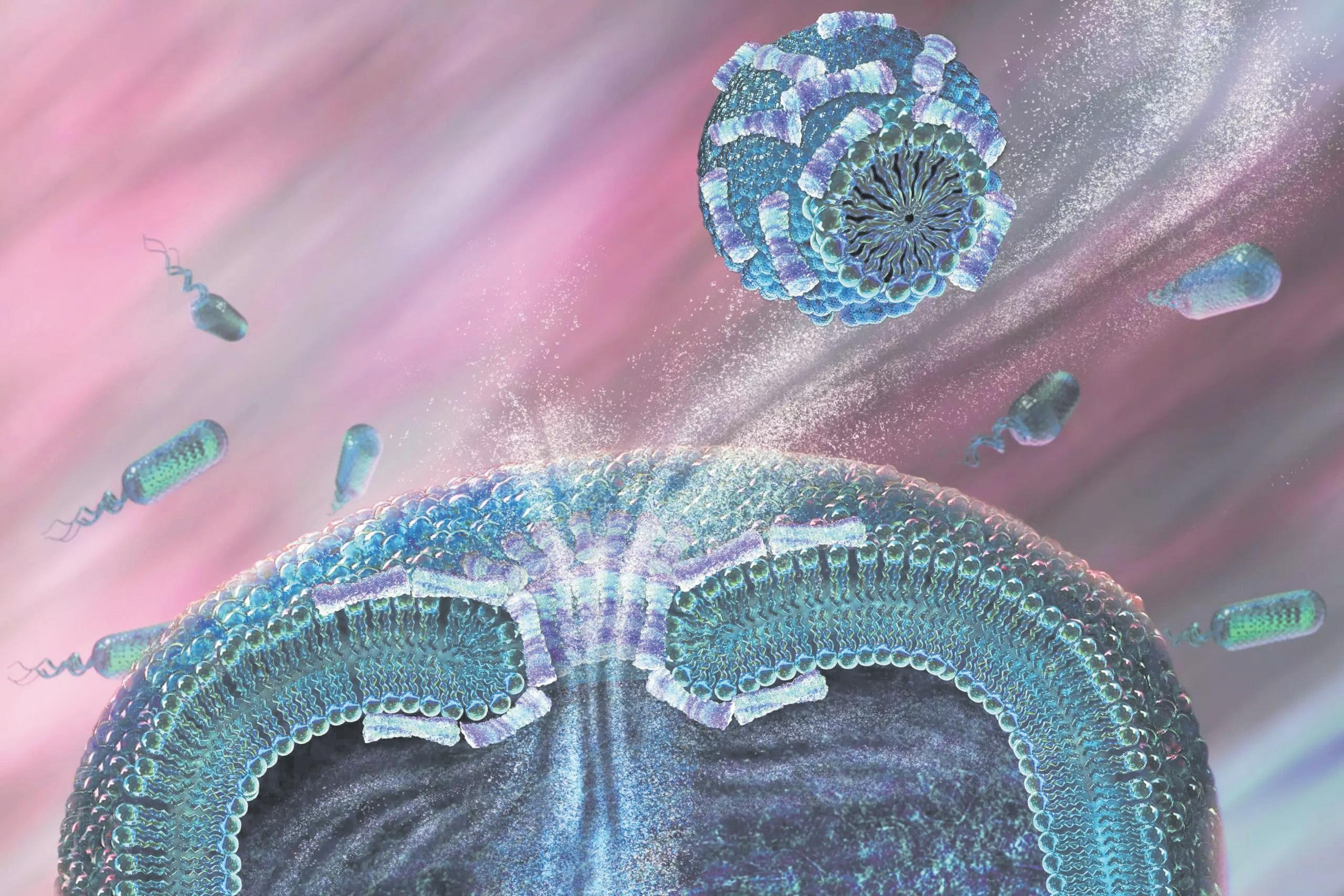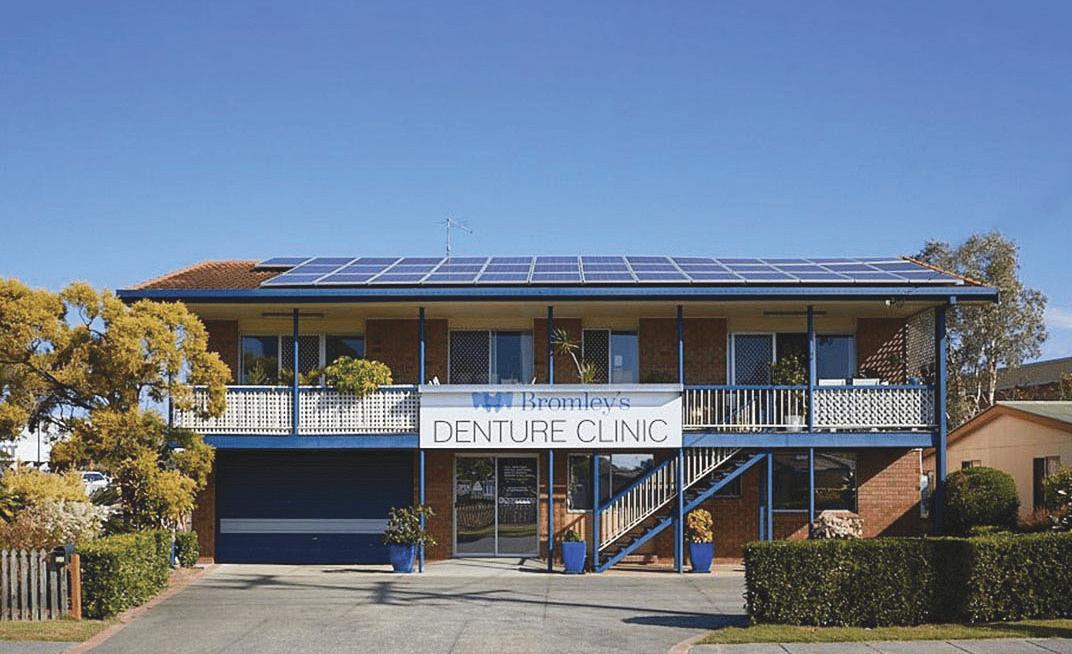
11 minute read
Health
Researchers from Monash University have discovered a potential new way to prevent antibiotic resistance and reduce antibiotic intake. The World Health Organisation (WHO) has declared antimicrobial resistance to be among the top 10 global public health threats. Antimicrobial resistance occurs when pathogens (bacteria, viruses, fungi and parasites) change over time and no longer respond to medicines, consequently infections become increasingly The study, ‘A Polytherapy based approach to combat antimicrobial resistance using cubosomes’, published in Nature Communications, has found that the use of nanoparticles in combination with other antibi improve bacterial killing. The paper makes an important new contribution resistant bacteria. in how we deliver medicine and how the medicine we take impacts us in the future,” says lead researcher Dr Hsin-Hui Shen. Dr Shen, of the Monash University Department of Materials Science and Engineering, and Professor Jian Li of the Monash Biomedicine Discovery Institute and the Department of Microbiology, have demonstrated that nanoparticle-based polytherapy treatments disrupt the outer membrane of superbug bac alternative to the conventional use of loading the antibiotic within lipid nanoparticles. “When bacteria becomes resistant, the original antibiotics can no longer kill them. Instead of looking for new antibiotics to counteract superbugs, we can use the nanotechnology approach to reduce the dose of antibiotic tidrug-resistant organisms,” says Dr Shen. that no new antibiotic has been discovered in the past 30 years, but globally there’s a crisis of antibiotics resistance which means that in the coming years, more people will die from basic infections because they have developed antimicrobial resistance. The WHO says the cost of antimicrobial resistance to the bials, the success of modern medicine in treating infections, including during major surgery and cancer chemotherapy, would be at increased risk.
“For a long time nanopar cally as antimicrobial carriers, but the use of nanoparticles in polytherapy treatments with antibiotics in order to overcome antimicrobial resistance has been overlooked,” says Dr Shen. “The use of nanoparticles-antibiotics combination therapy could reduce the dose intake in the human body and overcome the multidrug resistance.”

Active Denture Clinic
“Cosmetic Denture Centre” Oscar Bakos Dental Prosthetist
• Elegant Denture Design Solutions • Award Winning Clinic • Titanium Implant Denture Systems PH: 66227794 LISMORE
26 Uralba Street (opposite Lismore Square) www.cosmeticteeth.com.au
BOWEN THERAPY
GENTLE, SAFE & VERY EFFECTIVE PAIN RELIEF

For all your aches, pains, strains and migraines THINK BOWEN THERAPY (THE AUSSIE THERAPY) Practicing Bowen Therapy for the past 27 years LISMORE


23 McIntosh Rd, Goonellabah 6624 4424 (Every Tuesday) CASINO
Australia’s private hospitals essential to manage elective surgery surge
Australia’s private hospitals will be essential to addressing the backlog of necessary elective surgery when restrictions ease, new data from the Australian Institute of Health and Welfare (AIHW) reveals. The new data shows the median wait time for elective surgery has increased by a week, from 41 days pre COVID (2018-19) to 48 days in 2020-21. This is largely because restrictions on elective surgery meant many cases were deferred. Australian Private Hospitals Associa is a very big increase in waiting times. “When you look at surgeries by category, the increases in median wait time are even more significant. Those waiting for head and neck surgery now wait 112 days, up from 84 preCOVID,
while ophthalmology patients wait 118 days rather than 73, an increase of six and a half weeks,” he said. While the rise in public hospital elective admissions from a COVID-induced low in 2019-20 is good news, additional widespread restrictions after the period covered by the report means waiting times for surgery will now be even longer. “This data illustrates the essential role private hospitals will need to play in helping Australians get the vital surgery they need. Just as private hospitals have helped the public system with the pandemic response, they will be essential to clearing the surgical backlog post-pandemic. “Without private hospitals picking up the slack, Australians will be waiting a great deal longer to have their surgery – often important for quality of life, like cataract surgery to correct impaired vision or joint replacements to remove pain and improve mobility.” elective surgery should not last one day longer than they need to. “With signs the Omicron wave is plateauing in several states, health departments need to consult with private hospitals about easing restrictions in a safe way, so hospitals are ready to increase surgical capacity to provide much-needed treatment to those Australians who have had surgery deferred.
The psoas muscle is involved in most back pain! Learn what it is and why it causes problems. The biggest factor in back and hip pain is frequently the psoas muscle. Many believe the psoas muscle is one of the most important muscles in the body. The number of problems caused by the psoas is quite astonishing. These include: low back pain, sacroiliac pain, sciatica, disc problems, scoliosis, hip degeneration, knee pain, menstruation pain, infertility, and digestive problems. The list can also include biomechanical problems like pelvic tilt and leg length discrepancies. The psoas primarily flexes the hip and the spinal column. At about 16 inches long on the average, it is one of the largest and thickest muscles of the body. The psoas has a number of diverse functions, making it a key factor in health. The psoas functions as a hip and thigh flexor, which makes it the major walking muscle. If the legs are stationary the action of it is to bend the spine forward; if sitting, it stabilizes and balances the trunk. The lower psoas brings the lumbar vertebrae forward and downward to create pelvic tilt. When the muscle becomes contracted due to injuries, poor posture, prolonged sitting, or stress, it can alter the biomechanics of the pelvis and the lumbar, thoracic and even cervical vertebrae. Typically a dysfunctional psoas is responsible for referred pain down the front of the thigh and vertically along the lower to mid spinal column. Trigger points are found above the path of the psoas on the abdomen. The psoas can torque your spine to the right or left, pull it forward and twist the pelvis into various distortions. Frequently one psoas will shorten and pull the spine and/or pelvis to our dominant side. This all results in scoliosis, kyphosis, lordosis, trigger points, and spasms in back muscles trying to resist the pulling of the psoas. It can also pull the spine downward, compressing the facet joints and the intervertebral discs of the lumbar spine. The pressure can cause the discs to degenerate, becoming thinner and less flexible. This degeneration makes the discs more susceptible to bulging or tearing, especially with twisting and bending movements. The psoas will stay contracted because of postural habits and trauma. The way we stand, walk and sit can distort the psoas. If we walk or stand with our chin in an overly forward position the muscle will tighten. Sitting through much of the day causes the muscle to shorten to keep us bio-mechanically balanced in our chairs. Over time we develop a “normal” way of holding the psoas that is dysfunctional. Unresolved trauma can keep the psoas short and reactive. Until the psoas is released the muscle may stay contracted and go into further shortening and spasm very easily. Through very gentle touch I can easily check and release the psoas muscle, to encourage it to be in the optimal position for you. I can help with leg length di erence, and help to release the spasm or misalignment in those muscles. In most cases if you have three Bowen sessions your body can reprogram itself into being in a more aligned and erect position. Your muscles have a memory which can be reset through a whole body treatment, not just treating the psoas itself.
Sonia Barton Bowen Therapist

Bowen Therapist Scar Tissue Release Reiki Master

www.BowenEnergyWork.com.au MOBILE 0431 911 329

Despite the rush for rapid antigen tests (RATs), PCR testing remains a key to understanding and controlling the disease.
He urged governments not to downgrade the reliance on PCR testing, which he says provides important insight into the evolving nature of the pandemic within Australia.
“PCR testing also gives us the ability to do sequencing and to get an idea of how much Omicron there is, and when a new variant comes in,” Associate Professor Anderson said.
“If we were doing primarily RAT testing last November, December, we wouldn’t have known that Omicron was in the country and sadly, we knew Omicron was here and the policymakers pretended that it was not going to be a problem, so we’ve ended up in a mess anyway.
“But when the next variant comes, as it inevitably will, if we aren’t doing PCR, we won’t know.
“We need to continue to support doing large volumes of PCR testing and encourage people to take advantage of that.” – Associate Professor David Anderson.
He said despite the importance of PCR testing, the Omicron variant and subsequent surge in case numbers meant Australians needed far greater access to RATs so testing could be carried out at home.
“We know that PCR testing served us very well up until late last year, because there was enough capacity to test everyone who wanted a test and typically waiting times were not very long,” Associate Professor Anderson said.
“The idea that people need to search for tests is completely wrong. We’re a wealthy country and we can afford to provide RATs to people.” – Associate Professor David Anderson.
Professor Anderson also said the mounting death toll over Summer showed the perils of waning vigilance among politicians.
“I wish I could say I was shocked, but I’m not shocked,” Associate Professor Anderson said.
“Certainly, disbelief that we could throw away the hard work of two years and the hard work, not just of people who’ve been prepared to isolate when required and lockdowns etc, but especially of healthcare workers, who have been picking up after everyone for all this time.
“And that, against most expert advice, that we would let it rip over Christmas and New Year when we knew people would socialise, when this was inevitable.
“There was never good evidence that the (Omicron variant) would be so mild, that letting it spread in the community would be a good thing. Certainly, it’s a little bit milder than Delta, but what we knew for certain from the data from South Africa was that it would spread quickly.
“And this was an inevitable consequence of taking off all controls in some states.
COLUMN END OF Life Life
Care
Unfinished business
Everyone has a story. Our personal reality is based on our beliefs, our background and what motivates us. Up until this point in time, we have spent our whole lives crafting this story. And along the way, we tend to accumulate some baggage
Amongst the triumphs and conquests are the heartaches and headaches which, unless resolved may result in ‘unfinished business’. If hurt by someone we trust or remorseful over an incident, try as we must to leave it in the past, our environment has an uncanny knack of providing reminders.
For just one moment, close your eyes and imagine yourself in the last stage of your life, just days away from dying. See yourself in a setting that will bring you the most peace and contentment.
For me, I am in my home, my loved ones are present; relaxed and chatting. My dog lays quietly at my bedside, soft music is playing. My End of Life Doula is in attendance, the window open, I sense a pleasant breeze on my skin and my mind is at peace
My number one wish is to have all of my issues resolved before I am in my last days. This has seen me humbly approach others to say I am sorry. Some may think this is digging up the past. But it has all been worth it, because the people I spoke with knew exactly what I was talking about and I am now free from that emotional burden - and it feels great. The hardest part was carrying it around all those years!
Resolving our issues years down the track can be met with obstacles. Others may have moved on, or passed away. Some pain may seem impossible to remedy. An e ective way can be to write a letter, with an open heart. Confessions are often heard at the bedside of the dying. End of Life Doulas are neutral people, who are here to support you and explore creative methods to help heal old wounds and we are great listeners!










